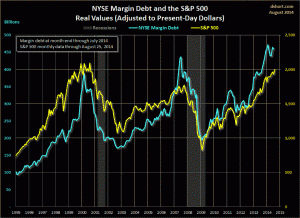After pressing major central banks to conduct asinine monetary policies, the IMF warns that the resulting levels of risk taking are “excessive.”
 Bullion.Directory precious metals analysis 20 September, 2014
Bullion.Directory precious metals analysis 20 September, 2014
By Christopher Lemieux
Senior FX and Commodities Analyst at FX Analytics
The International Monetary Fund (IMF) and its managing director, Christine Lagarde, have been staunch advocates of excessive central bank intervention. Earlier this year, Christine Lagarde urged the Federal Reserve to do more in order to boost the US economy, as if expanding the balance sheet by almost $4 trillion was not enough.
Perhaps, reality must be setting is as the dream fades. As much as the Federal Reserve has done, the US has been grinding through the slowest recovery from a recession since World War II. And to kickoff the G20 meetings, the IMF prepared a report stating that quantitative easing encourages too much risk, and that the “sharp downside risks are rising.”
In other words, the programs that the IMF were openly pushing as the cure to end the lack of growth pandemic were really aiding in the sickness.
In the statement, the IMF warns that a range of indicators are showing that investor speculation, which is fueled by large amounts of margin, was excessive and could cause the markets to fall. Margin is money loaned by a broker to an investor in order to purchase assets, to which the broker usually charges a fee.
However, margin is dangerous because it can amplify losses. If the equity markets were to pullback, investors would experience a great deal of losses. If those losses become to great, the event of potential margin calls would come into play. An investor has two options: more margin can be added to the account to avoid a margin call, or the investor will unwind current positions and cut losses.
The second scenario is more likely, and the large scale unwinding could send stocks into a deep decline.
Here is a chart showing the record levels of NYSE margin up to July 2014. Notice the correlation between the S&P 500 and margin levels. Margin levels seem to have peaked just prior to the recession in the early-2000s and, again, right before the Great Recession. Moreover, the higher the margin, the deeper the declines in the S&P 500. Currently, margin levels far surpass those in the previous example. Considering all things equal, we are likely to see a decline far exceeding the lows made in 2009.
Humans can be predictable creatures, and greed is the great hubris on Wall Street. The problem that exist is that low interest rates and easy money for an extended period of time have been the contributing factor to the last two major meltdown; however, central bankers and politicians try to condition us in believing it is helping the economy.
The bears may be few and far between at this point, but those that play the market smart while holding onto their convictions will sadly have the last laugh.
Bullion.Directory or anyone involved with Bullion.Directory will not accept any liability for loss or damage as a result of reliance on the information including data, quotes, charts and buy/sell signals contained within this website. Please be fully informed regarding the risks and costs associated with trading in precious metals. Bullion.Directory advises you to always consult with a qualified and registered specialist advisor before investing in precious metals.













 Material provided on the Bullion.Directory website is strictly for informational purposes only. The content is developed from sources believed to be providing accurate information. No information on this website is intended as investment, tax or legal advice and must not be relied upon as such. Please consult legal or tax professionals for specific information regarding your individual situation. Precious metals carry risk and investors requiring advice should always consult a properly qualified advisor. Bullion.Directory, it's staff or affiliates do not accept any liability for loss, damages, or loss of profit resulting from readers investment decisions.
Material provided on the Bullion.Directory website is strictly for informational purposes only. The content is developed from sources believed to be providing accurate information. No information on this website is intended as investment, tax or legal advice and must not be relied upon as such. Please consult legal or tax professionals for specific information regarding your individual situation. Precious metals carry risk and investors requiring advice should always consult a properly qualified advisor. Bullion.Directory, it's staff or affiliates do not accept any liability for loss, damages, or loss of profit resulting from readers investment decisions.

Leave a Reply